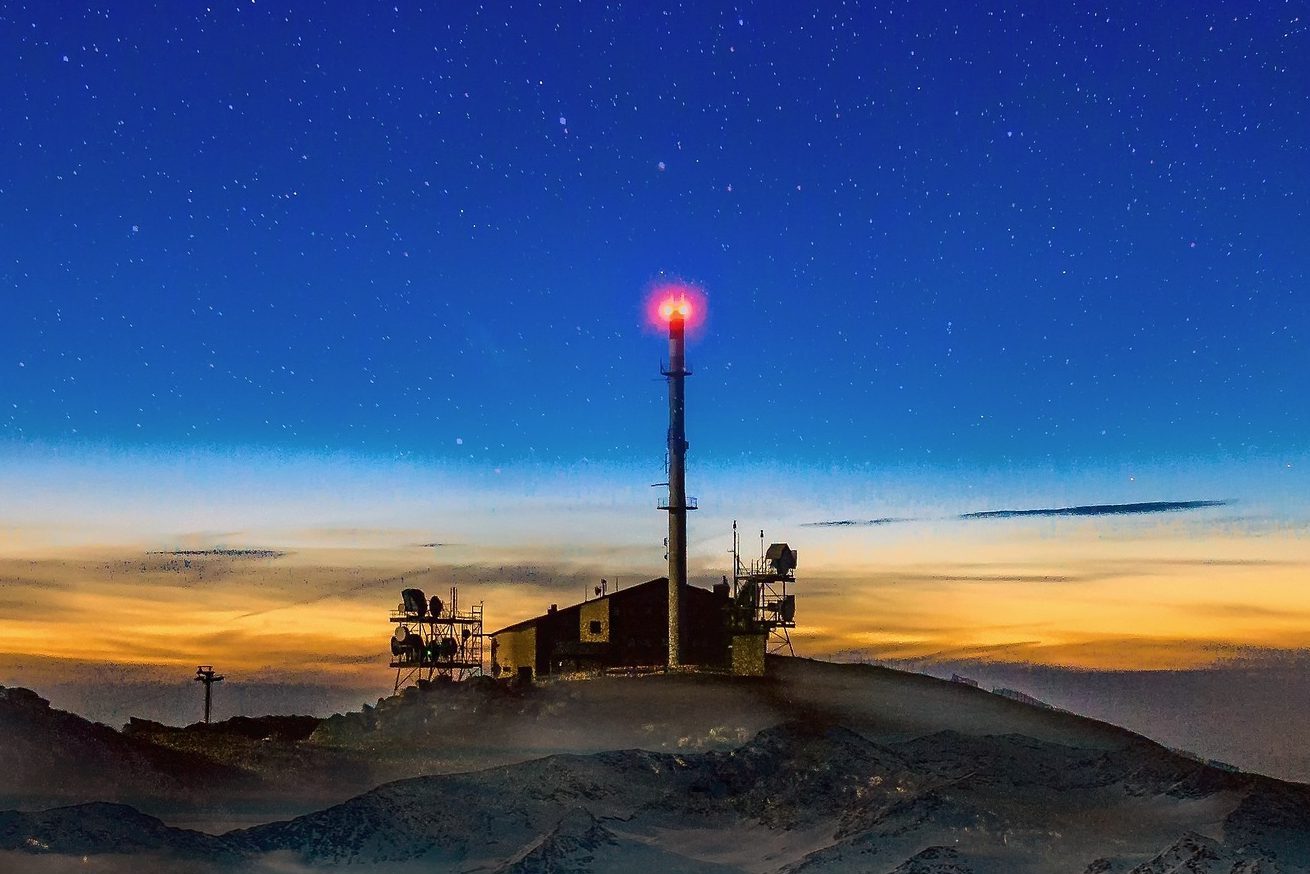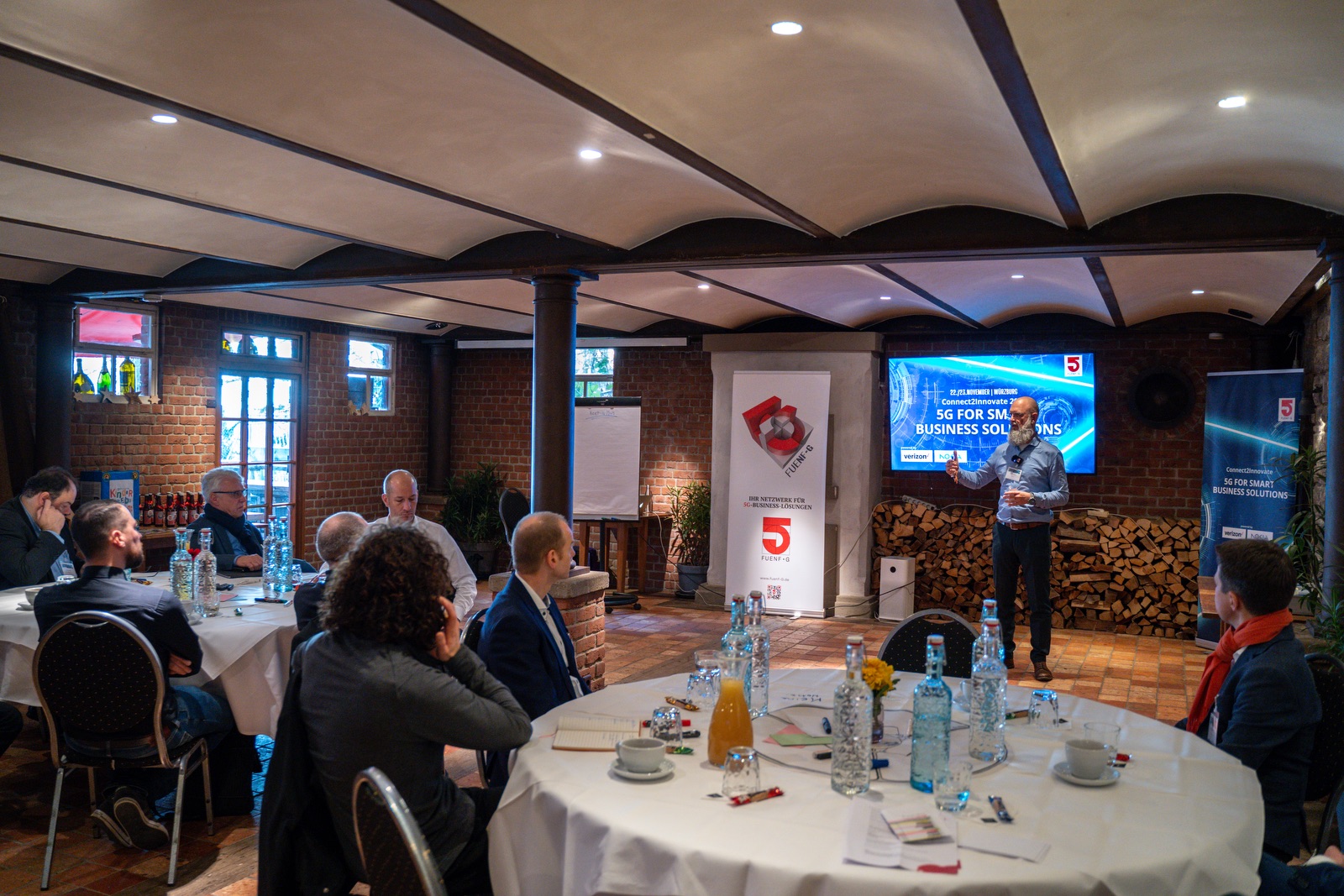Criticism of 5G is often based on wrong assumptions and misinformation (Picture: pixabay/liggraphy)
Online platforms, citizens’ initiatives and even one or two editors are stirring up fear of “5G waves” or even “5G rays”. But there is no such thing at all. Here are the most important facts about the new 5G mobile communications standard, the frequencies used and possible risks.
Have you ever heard of traffic light waves? Or of headlight waves? No? Me neither. Nobody would think of designating visible light in the red-yellow-green range or differently “white” light from car headlights, which can vary from yellowish-white to pure white and bluish-white, in this way. Everyone knows: light can be used in a wide variety of applications. The light spectrum that comes out of a car headlight is possibly the same as that of a train signal light, a desk lamp or a light barrier.
Strangely enough, it is completely different for non-visible radio waves. Recently “5G waves” and “5G rays” have been haunting forums and articles. UMTS waves or LTE waves have also been mentioned in the past. However, this type of designation is usually completely wrong. And especially in the case of 5G it is even extremely misleading.
Common mobile radio frequencies
The first mobile phone networks introduced in Germany (A, B and C networks) were still analogue and are no longer in operation today. D- and E-networks were digital for the first time and opened the way to digital mobile data transmission, first using the GPRS standard, later Edge. They are considered to be second-generation data transmission standards, hence the current abbreviation 2G.
The UMTS, HSDPA and HSDPA+ (3G) standards followed. LTE and LTE Advanced marked the fourth generation (4G), the successor standard actually has the name “New Radio” (NR), but is usually referred to as 5G NR or simply 5G.
These different mobile radio standards use different frequency bands, currently in the range of 700 MHz to 5 GHz, as shown in the diagram below. Modern smartphones and adapted transmission/reception technology make it possible to offer the services offered on different frequency blocks – the bandwidths add up for the user. For this reason, a designation of, for example, “LTE waves” is nonsense – LTE can take place in the 700 MHz band, in the 2.6 GHz band and also in different frequencies in between.

Currently used mobile radio frequencies
Frequencies used in the future
With 5G, particularly high data transmission rates should be possible. For this, high bandwidths must also be made available. At the current frequency auction, Telekom and Vodafone could secure up to 130 MHz in the 3.6 GHz band, which would enable data rates of up to 1.5 Gb/s – but only in metropolitan areas. This band is not suitable for area coverage because the waves do not propagate very far. The frequencies in the 700 MHz band that have been used by DVB-T so far are more suitable for this purpose. There, however, the bandwidths are limited so that the maximum achievable data rates are also lower.
However, larger coherent frequency ranges – which enable huge data rates – are found in even higher frequency ranges. For 5G, for example, bands in the range from 24 to 86 GHz are under discussion. The 3GPP standardization committee has defined two different frequency ranges (FR, Frequency Ranges) for 5G Release 15: from 450 MHz to 6 GHz (FR1) and from 24.25 GHz to 52.6 GHz (FR2). FR2 frequencies are already allocated in the USA. In Germany, there have been individual field trials in this area to date, for example by Telefónica (O2) in Hamburg, where fixed wireless connections (FWA) over 5G were tested for three months at a frequency of 26 GHz. However, this frequency range cannot be used everywhere, as directional radio is also currently mainly carried out in the 26 GHz band. However, a change is in sight. By mid-2020, the Federal Network Agency (BNetzA) wants to prepare a draft that regulates the allocation of frequencies in the 26 GHz range (24.25 to 27.5 GHz). The allocation procedure could then be opened at the end of the year or early in 2021.
In contrast, the test transmission of 5G broadcasting in Upper Bavaria, which started in early May 2019, uses frequencies at 750 MHz. This is intended to replace DVB-T in the long term. By the end of May, the current standard will free up the frequencies at 700 MHz used to date, which can then be used for area coverage with LTE or 5G. The current DVB-T2 occupies the spectrum from 470 to 690 MHz, which could later also provide additional capacity for mobile communications.
Misleading designations
Originally, “5G waves” or “5G beams” were probably meant for applications in the high FR2 frequency ranges, i.e. above 24 GHz. But mostly the knowledge about the different frequencies used is missing or simply not differentiated.
Alternatively, there is also talk of “microwaves”, especially when a reference to microwave ovens is to be made to illustrate the alleged dangers of this radiation. Microwaves are generally spoken of in the range from 300 MHz to 300 GHz. Electromagnetic waves below 300 MHz are radio waves, at 300 GHz the infrared radiation begins.
By the way: microwave ovens generally use 2.455 GHz, i.e. frequencies close to the WLAN spectrum. In the USA, industrial microwave ovens are also in use, using free frequencies at 900 MHz. In this country, this frequency range is occupied by LTE. However, WLAN and mobile communications use much lower energy densities, so equating mobile phone masts and WLAN routers with microwave ovens does not do justice to the facts.
The term “millimeter waves” is more or less correct for the higher frequency ranges. Wavelengths from 1 mm to 10 mm correspond to the frequencies from 30 to 300 GHz. If one takes “millimeter waves” not as a physically exact designation but as a generic term, one can also include the range of the FR2 spectrum down to 24 GHz relevant for 5G.
Old and new limit values
On the occasion of the auction of 5G frequencies in Germany, the Federal Office for Radiation Protection (BfS) addressed the question of the dangers posed by the new mobile radio standard. Here the BfS came to differentiated assessments:
- in the range of millimeter and centimeter wavelengths (corresponding to FR2), only few investigation results were available. Here the BfS still sees a need for research;
- in the area of FR1, many technical aspects of 5G are comparable with those of previous mobile radio standards. Findings from studies in which possible health effects of electromagnetic fields of mobile radio were investigated could therefore be transferred to 5G to a large extent. According to the current state of scientific knowledge, no health effects are to be expected if the current emission limits are met.
However, in the meantime, these limit values can actually influence the expansion of 5G. This is because the transmission power of the new mobile phone standard is added to that of 2G, 3G and 4G. In Switzerland, for example, the limits have already been exhausted at every fourth antenna mast. As a result, some of the 5G installations now have to move to new sites. In Brussels, which has the strictest emission limits in the world, the installation of 5G masts has even been suspended because the regional government was not willing to grant an exemption for the new technology. It is still open whether the existing limits are suitable for frequencies above 24 GHz and how radiation emissions are to be assessed in addition to the various bands. Here, future research will hopefully provide clarity.
Below 24 GHz – i.e. between the FR1 and FR2 segments – the spectrum is protected, for example for climate research, which uses 23.8 GHz sensors to measure the proportion of water vapor in the atmosphere. The fear that these measurements will be affected by 5G applications in the 24.0 to 27.5 GHz range is not due to the fact that these frequencies are used at all. Rather, it is due to the fact that the USA – unlike Europe – may have set limits for radiation intensity that are too lax. However, this could still be corrected by the International Telecommunication Union (ITU), which will deal with this problem at the next World Radiocommunication Conference (WRC) in October and November 2019.
No antenna forest in the country
In Germany, there are 25,000 antenna sites so far, the number of antennas is higher, since several antennas are installed per site. Forecasts according to which 200,000, 800,000 (Bitkom) or even 1.2 million (BUGLAS) masts or sites would be needed nationwide to roll out 5G are pure nonsense. The same applies to statements that a transmitter would be needed every 400 or even every 150 meters everywhere – even in the countryside.
These calculations are based on the wrong assumption that the frequencies currently offered at auction or even those in the millimeter range would be used for area coverage. The area coverage will probably be implemented in the range below 1 GHz for 5G, for example on the former DVB-T frequencies. Here, the waves offer a sufficiently large propagation to avoid “sparring” of the landscape.
The situation is different only in densely populated areas. In cities, where many users live together in a small area, there will indeed be a closer-meshed network of 5G antennas in order to achieve the required bandwidths with correspondingly high data rates for many subscribers per cell. This will initially be realized on the basis of the currently auctioned frequencies in the 2.0 and 3.6 GHz range, with correspondingly smaller radio cells. And eventually also on the basis of millimeter waves, when the corresponding frequencies are available for use.
Comment: Plea for more objectivity
The discussion around millimeter waves, which is led in the USA, passes at present at the German reality. However, if even the BfS itself pleads for further research to be carried out here, this should be taken seriously and the operation of these frequencies should be reconsidered and prepared with scientific help. Horror numbers regarding transmitter locations, claims that masses of trees would be cut down because they disturb the reception, or speculations about conflicts with weather research are however far-fetched or exaggerated and can be ignored confidently, just like many other abstrusenesses, which entwine themselves approximately around 5G.
The future mobile communication standard 5G offers a lot of chances. This must not be a reason to completely ignore possible dangers of a new technology. However, a serious examination of the risks cannot be conducted on the basis of fake news, distortions or falsifying headlines that only vie for attention – in other words: clicks from online users. Reliable information instead of incriminating emotions: this should be the basis for a reasonable discussion. Where there is talk of “5G waves” or 5G is used as a synonym for high-frequency radiation, there is indeed a high risk. But not for your health, but for an objective, well-founded opinion. However, the topic is too important to be left to mood makers.









Leave A Comment